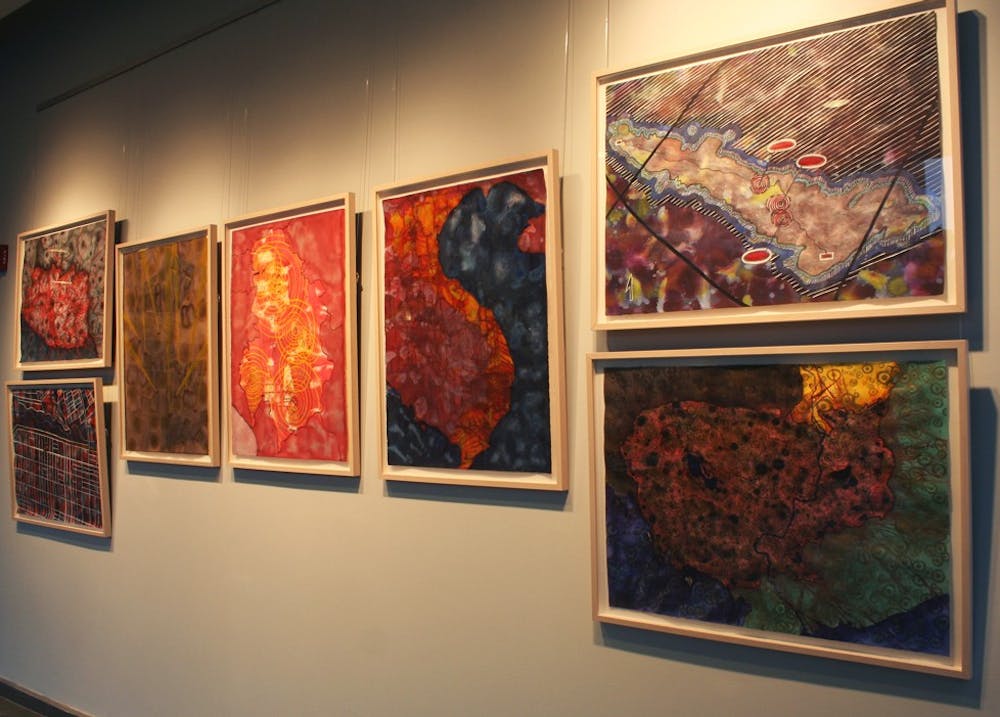elin o’Hara slavick won’t capitalize her name.
But for slavick, a UNC professor and visual artist, her creative capitalization choices aren’t nearly as important as the subjects addressed in her work.
slavick’s latest projects — “Hiroshima: After Aftermath,” and “Protesting Cartography: Places the U. S. Has Bombed” — are part of an exhibition titled “Aftermath” currently on display in the lobby of the FedEx Global Education Center.
“This exhibition encourages thought about a tough topic many of us often choose to ignore,” said Laura Griest, outreach coordinator for the FedEx Global Center.
“elin’s work forces us to see the implications of war and the lives that are touched.”
Both “Protesting Cartography” and “Hiroshima” have been shown numerous times across the United States, as well as in Cuba and Holland.
Born into an activist family, slavick grew up marching in protests and anti-war rallies.
She carried her pacifism into adulthood, transferring her street experiences into paintings of maps that portray the countries around the world that the United States has bombed.
The idea is to get people to think about maps in a different light, slavick said.




